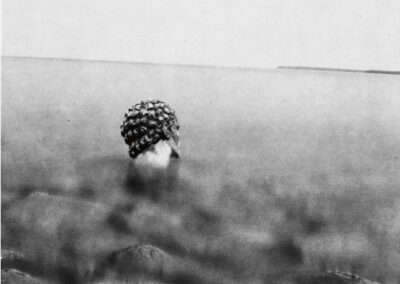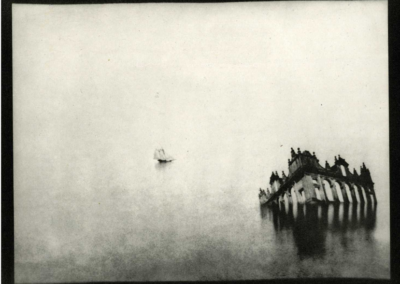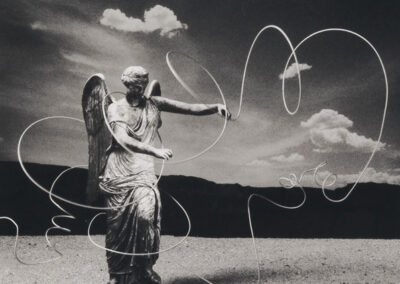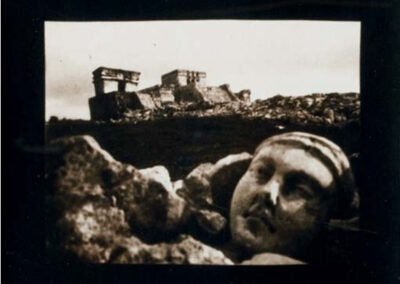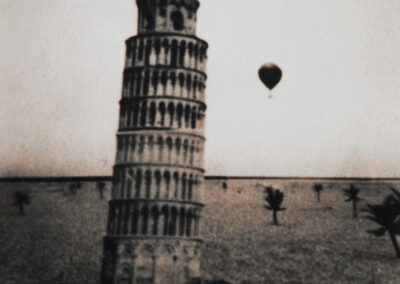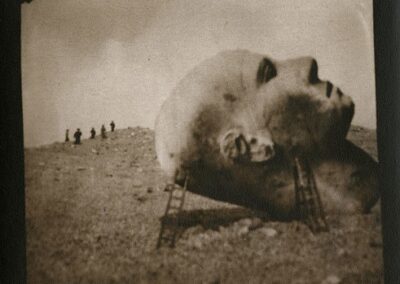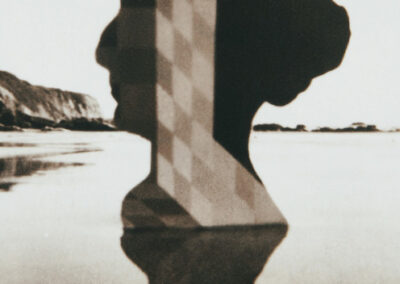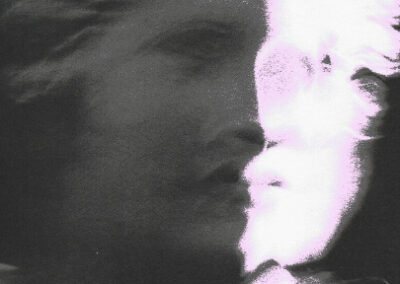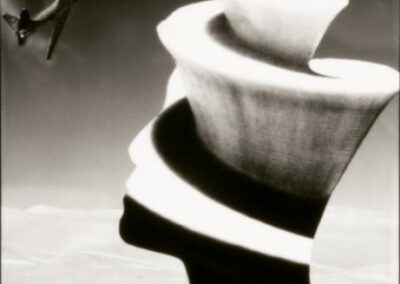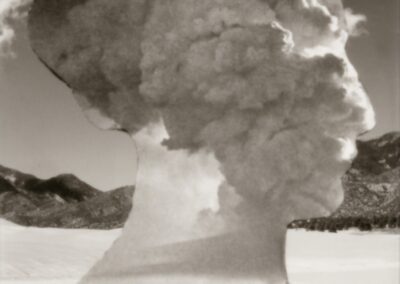With the proliferation of new digital techniques in lens based media, one of the interesting responses to this is not just a full embrace of the new mediums, but also a renewed interest in historical and ‘traditional’ methods of photography. Our latest Artist You Need To Know is someone whose process extensively explored the use of pinhole cameras and paper negatives, and “often incorporates into her images handmade miniature props (cardboard silhouettes, cones, pyramids, and ships), constructing mythic tableaux that recall forms and fragments from antiquity, as well as 20th-century surrealism.” (from here). Ruth Thorne – Thomsen was born in 1943 in New York City, and often spoke of her images as “environmental collage.”
-
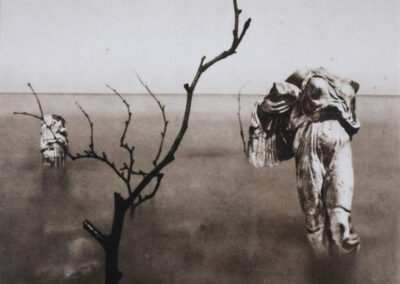
Parable II, from Songs of the Sea, 1991
-

River Nepenthe, 1986 - 1992
-

Window, Wisconsin. from the series Songs of the Sea, 1991
-

Duet, 1991
-

The World Turns as a Ball Time is Longer than a Rope, 1997
-

Expéditions Mexico Face at Tulum, 1978
Her accomplishments are an impressive list, that span not only fine art photography, but the areas of photo journalism and dance. Thorne – Thomsen obtained a BFA in photography from Columbia College (1973) and an MFA in photography from the School of the Art Institute of Chicago (1976). But prior to that Thorne-Thomsen earned a Fine Arts degree. in dance from Columbia College (1963) and toured from 1964 to 1965 with the Sybil Shearer Dance Company.
She also taught photography at the University of Colorado and was employed by the Chicago Sun-Times as a staff photographer. From 1974 to 1983, she taught photography at Columbia College and was later (from 1983 to 89) a teacher at the University of Colorado. Currently, Thorne-Thomsen divides her time between Philadelphia and Moab, Utah.
Thorne – Thomsen often worked in series, and several notable bodies of work she produced include Expeditions (1976-84), Prima Materia (1985-87), Views from the Shoreline (1986-87), and Songs of the Sea (1991 to present). A recipient of a Lifetime Achievement Award from Columbia College in Chicago, she has also been awarded multiple National Endowment for the Arts grants, as well as a grant from La Napoule Foundation, France (1989). Exhibitions of her photographic works have been mounted at the Art Institute of Chicago, the St. Louis Art Museum, and the Museum of Contemporary Art in Chicago. The latter institution featured a retrospective exhibition of Ruth Thorne – Thomsen’s artistic practice in 1993.
She is “best known for her constructed landscape photographs made with a cigar-box pinhole camera. In these works, she sets cropped pictures and miniature props in real landscapes, exposes them onto paper negatives, and produces sepia-toned contact prints. The resulting images feature an infinite depth of field, freedom from linear distortion, a high level of contrast, and a soft grain. Because of her choice of subjects, the printing method, and the pinhole camera’s rendering of sharply focused but ambiguously scaled subjects, her images recall both nineteenth-century calotype landscapes and the uncanny juxtapositions of Surrealist imagery from the 1920s and 1930s.” (Lisa Hostetler, writing for the Institute of Contemporary Photography)
-

Geometric Lady, California, from Views from the Shoreline, 1982
-

Messenger 4, 1990
-

Eonic Queen, from Views from the Shoreline, 1986
-

Messenger 20, 1990
-

Señora Flora, New Mexico from Views from the Shoreline, 1987
-

Thunderhead, from Views from the Shoreline, 1986.
Thorne – Thomsen’s work is in numerous significant collections around the world. These include the Art Institute of Chicago, Bibliothèque Nationale, Paris, Centre Georges Pompidou, Paris, Cleveland Museum of Art, J. Paul Getty Museum, Los Angeles County Museum of Art, The Metropolitan Museum of Art, Philadelphia Museum of Art, San Francisco Museum of Modern Art, The Walker Art Center, Minneapolis and the Whitney Museum of American Art.
More from Lisa Hostetler (who was Curator of Photography Smithsonian American Art Museum and is currently Head Curator of Photography at the George Eastman Museum): “Drawing references from philosophy, literature, myth, and dreams, [Ruth Thorne – Thomson] configures a psychic territory where archetype and reality playfully coalesce.”
More information about this artist, including her extensive exhibition history and her methodology in creating her photographs, can be found here and here.

